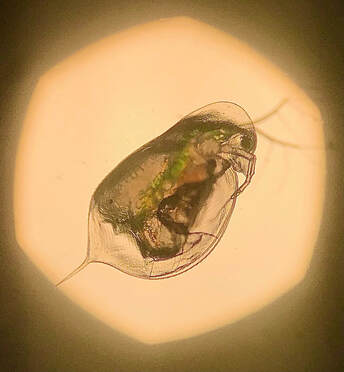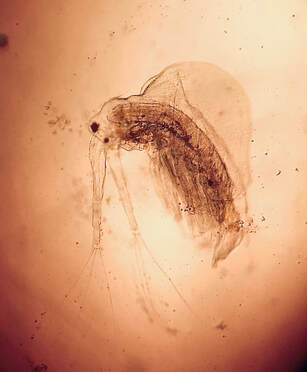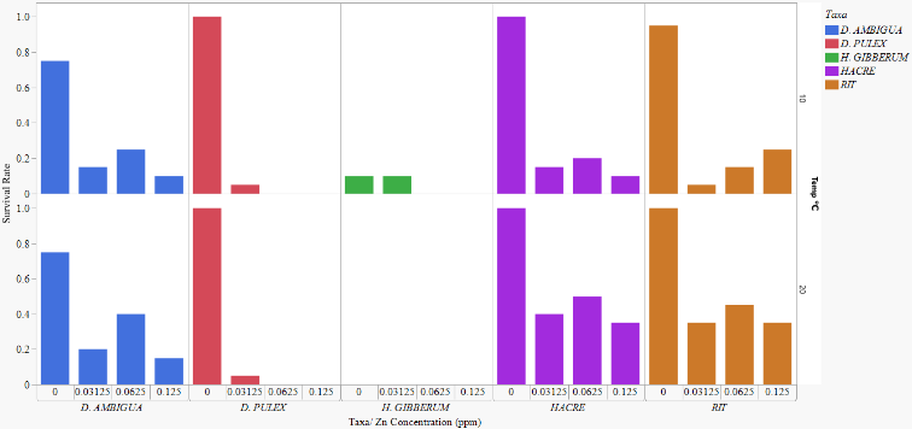What are bioindicators?
Bioindicators are living organisms that provide valuable insight into the quality of the natural ecosystem within the environment. These organisms (plants, plankton, animals, microbes) help determine whether or not environmental stressors are present, such as pollution, toxins, or variations from the average conditions. Each organism provides an indication regarding the health of the surrounding ecosystem. For example, tubifex worms are used as a water quality indicator because they can tolerate low oxygen conditions and presence of heavy metals, indicating oxygen-poor water or undrinkable water.
What is biomonitoring?
Biomonitoring is the process of recording species diversity and abundance data of bioindicators across different locations and/or times. They are used to evaluate risks to human health or the environment. Many biomonitoring processes were created to be simple and affordable. Biomonitoring processes and bioindicators don’t explain the underlying causes behind what they are showing. They are also typically specific to a single system like a lake, stream, or forest which makes it difficult to compare across systems.
Bioindicators are living organisms that provide valuable insight into the quality of the natural ecosystem within the environment. These organisms (plants, plankton, animals, microbes) help determine whether or not environmental stressors are present, such as pollution, toxins, or variations from the average conditions. Each organism provides an indication regarding the health of the surrounding ecosystem. For example, tubifex worms are used as a water quality indicator because they can tolerate low oxygen conditions and presence of heavy metals, indicating oxygen-poor water or undrinkable water.
What is biomonitoring?
Biomonitoring is the process of recording species diversity and abundance data of bioindicators across different locations and/or times. They are used to evaluate risks to human health or the environment. Many biomonitoring processes were created to be simple and affordable. Biomonitoring processes and bioindicators don’t explain the underlying causes behind what they are showing. They are also typically specific to a single system like a lake, stream, or forest which makes it difficult to compare across systems.
A bioindicator study in Lake Lacawac
Introduction:
Alex Bros, an undergraduate student at Rochester Institute of Technology, conducted a study of cladocerans in Lake Lacawac to determine their use as bioindicators of zinc pollution. Cladocerans are crustaceans that are part of the zooplankton community in freshwaters.
Daphnids, the cladocerans used in this study, are commonly found in lakes and graze on algae, helping control algal populations. In recent years a competitive zooplankton, Holopedium gibberum (right), has become abundant and nearly invasive in nature in a number of North American lakes. These zooplankton also graze on algae but are omnivorous in nature and have a gel capsule along its back making it unpalatable to most predators. H. gibberum populations have boomed in Lake Lacawac most likely because of these adaptations.
Two types of daphnids, H. gibberum and Daphnia ambigua, were used to assess impacts of zinc on these zooplankton populations. Zinc was chosen as a heavy metal of interest as it persists in aquatic ecosystems and it is difficult to define its sources for pollution. A primary source of zinc pollution comes from tire treks and correlates with increased automobile traffic. D. ambigua and H. gibberum were collected from Lake Lacawac and other species were collected from a lake in Rochester N.Y. The daphnids were exposed to zinc for an acute seven-day study and for a longer twenty-day study.
Alex Bros, an undergraduate student at Rochester Institute of Technology, conducted a study of cladocerans in Lake Lacawac to determine their use as bioindicators of zinc pollution. Cladocerans are crustaceans that are part of the zooplankton community in freshwaters.
Daphnids, the cladocerans used in this study, are commonly found in lakes and graze on algae, helping control algal populations. In recent years a competitive zooplankton, Holopedium gibberum (right), has become abundant and nearly invasive in nature in a number of North American lakes. These zooplankton also graze on algae but are omnivorous in nature and have a gel capsule along its back making it unpalatable to most predators. H. gibberum populations have boomed in Lake Lacawac most likely because of these adaptations.
Two types of daphnids, H. gibberum and Daphnia ambigua, were used to assess impacts of zinc on these zooplankton populations. Zinc was chosen as a heavy metal of interest as it persists in aquatic ecosystems and it is difficult to define its sources for pollution. A primary source of zinc pollution comes from tire treks and correlates with increased automobile traffic. D. ambigua and H. gibberum were collected from Lake Lacawac and other species were collected from a lake in Rochester N.Y. The daphnids were exposed to zinc for an acute seven-day study and for a longer twenty-day study.
The Daphnia species used in this study.
Results:
In this study, the populations that are likely exposed to more zinc (collected from Rochester) appeared to do better than the Lacawac populations at most concentrations, especially higher concentrations of zinc. Most populations had a lower population rate when exposed to zinc during the longer experiment compared to the shorter one.
In this study, the populations that are likely exposed to more zinc (collected from Rochester) appeared to do better than the Lacawac populations at most concentrations, especially higher concentrations of zinc. Most populations had a lower population rate when exposed to zinc during the longer experiment compared to the shorter one.
Survival rate after 4 days of zinc exposure at 2 temperatures (top row = 10 degrees C, bottom row = 20 degrees C). Blue is D. ambigua, green is H. gibberum, red is Daphnia pulex (a commonly used Daphnid) and orange and purple are Rochester populations of cladocerans. As you move left to right within each set of bars, the concentration of zinc increases.
What does this mean?
Overall, these populations showed decreases in survival rate when treated with zinc. This suggests that these zooplankton may be good bioindicators of zinc pollution. The impacts of these populations may help scientists predict how organisms at a higher trophic level (like fish and amphibians) may be impacted due to zooplankton declines. The differences in their survival when exposed to zinc also highlights the importance of utilizing several different populations when assessing the impact of a pollutant in an environment as some populations may be more susceptible to that particular pollutant. Knowing these differences will also help scientists predict the health of a lake or body of water and how it may react to a pollutant.
Overall, these populations showed decreases in survival rate when treated with zinc. This suggests that these zooplankton may be good bioindicators of zinc pollution. The impacts of these populations may help scientists predict how organisms at a higher trophic level (like fish and amphibians) may be impacted due to zooplankton declines. The differences in their survival when exposed to zinc also highlights the importance of utilizing several different populations when assessing the impact of a pollutant in an environment as some populations may be more susceptible to that particular pollutant. Knowing these differences will also help scientists predict the health of a lake or body of water and how it may react to a pollutant.
Location |
|


